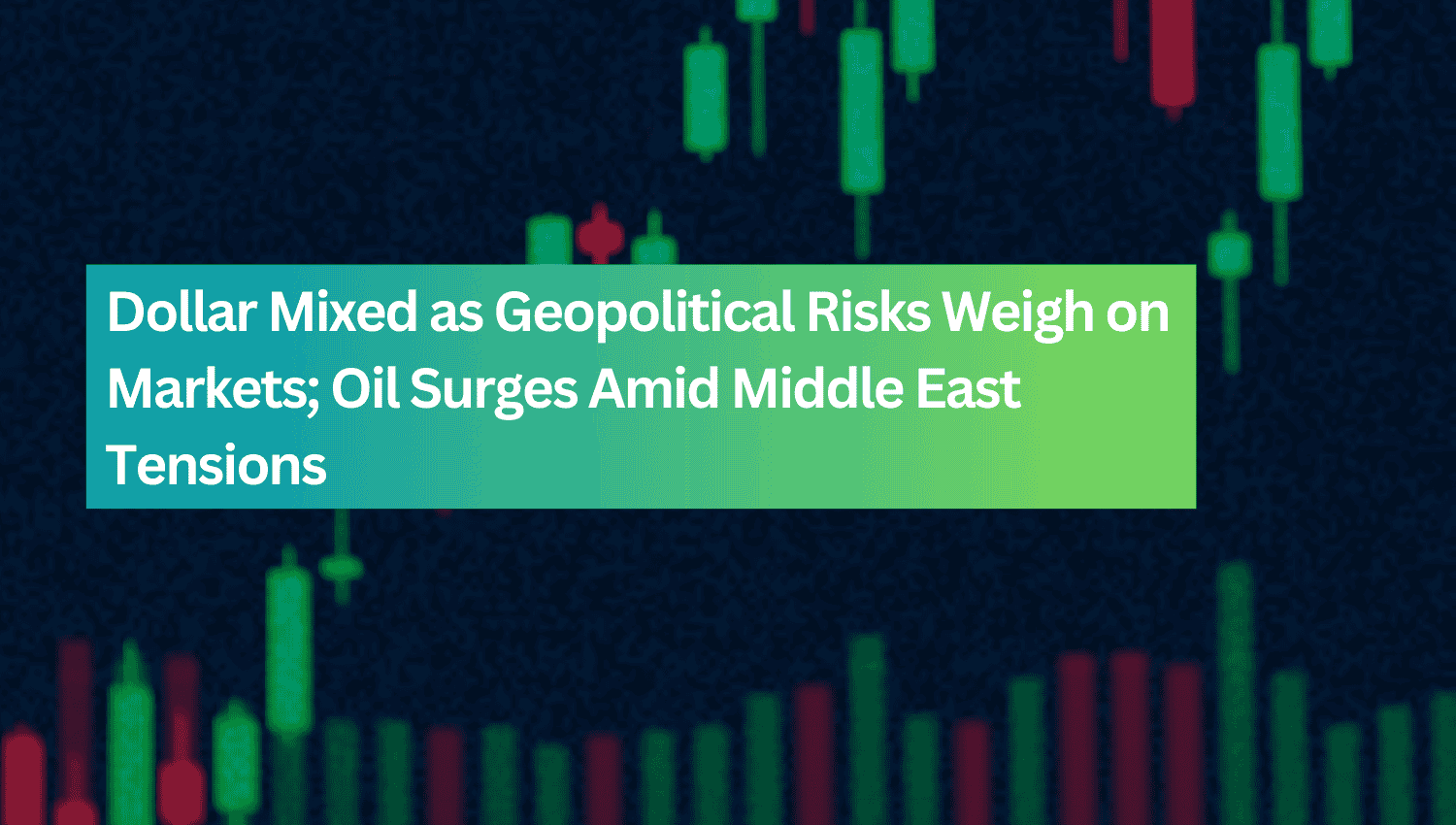Macro Outlook

The dollar showed mixed performance against its G-10 counterparts as markets navigated the implications of escalating conflict in the Middle East. Rising tensions dampened risk appetite, prompting a shift towards haven currencies. The situation intensified as Hezbollah launched rockets at Haifa, Israel's third-largest city, and Israeli forces prepared to escalate ground operations into southern Lebanon.
Oil Prices Rise Amid Middle East Conflict
Geopolitical instability pushed oil prices up by about 3%, driven by fears that a broader regional conflict could disrupt supplies. The surge in oil prices reflects concerns over the potential economic impact of supply chain disruptions in the energy market, adding pressure to the inflation outlook.
Fed's Kashkari Highlights Economic Resilience
Minneapolis Federal Reserve Bank President Neel Kashkari offered a more moderate view of the U.S. economy, emphasizing its resilience and noting a relatively strong labor market despite some emerging signs of softening. His comments provided a counterpoint to concerns about the effects of global instability on U.S. economic momentum.
ECB Officials Signal Possible Rate Cut
Across the Atlantic, European Central Bank officials, including French Central Bank Chief Francois Villeroy de Galhau, signaled the potential for an interest rate cut at the October 17 meeting. The decision is driven by concerns over sluggish economic growth and the risk that inflation may fall short of the ECB’s 2% target.
U.S. Treasury Yields Rise as Yield Curve Flattens
In the bond market, U.S. Treasury yields rose by 3 to 6 basis points, contributing to a slight flattening of the yield curve. The 2s-10s spread narrowed by 1 basis point to +3.3 basis points, reflecting cautious investor sentiment amid shifting interest rate expectations.
Equity Markets and Commodities React to Uncertainty
Equity markets struggled due to heightened geopolitical risks and changing interest rate outlooks, with the S&P 500 falling 0.71%. Investors weighed the potential economic impact of the Middle East conflict and the pressure of rising oil prices on inflation and growth prospects. Gold, typically a safe-haven asset, dipped by 0.24% as a stronger dollar and climbing Treasury yields reduced its appeal. Copper prices fell by 0.37% as markets awaited key policy updates from China aimed at boosting economic growth, adding to uncertainties about global demand.
Currency Market Dynamics: Haven Flows Benefit Yen
The dollar’s performance was uneven, reflecting the complex interplay of geopolitical risks and central bank policies. EUR/USD declined slightly by 0.06%, with expectations of an ECB rate cut weighing on the euro. The yen strengthened against the dollar, with USD/JPY down 0.4%, as safe-haven flows favored the yen amidst the geopolitical uncertainty in the Middle East. The British pound and Australian dollar faced greater pressures, with GBP/USD down 0.38% and AUD/USD down 0.71%, as risk sentiment weakened and the dollar remained firm. Currency pairs involving the yen, such as EUR/JPY and GBP/JPY, saw sharper declines of 0.49% and 0.82%, respectively, highlighting the yen’s resilience in periods of market stress. AUD/JPY recorded the steepest decline, falling 1.18%, as risk-sensitive currencies struggled in the uncertain environment.

